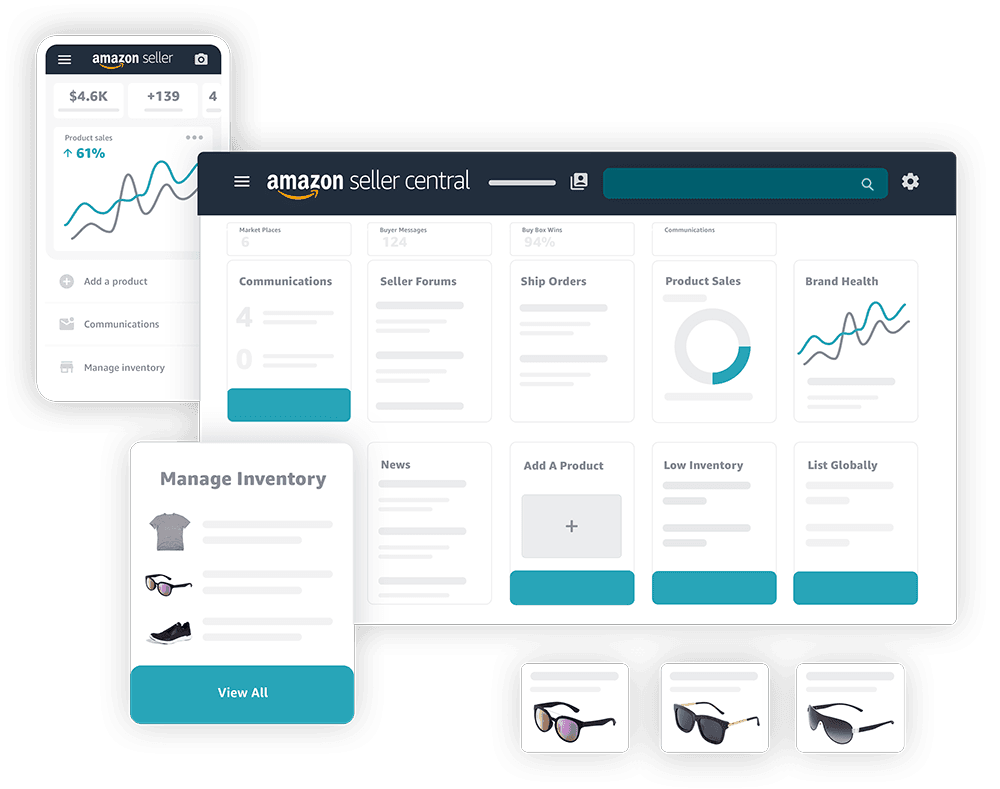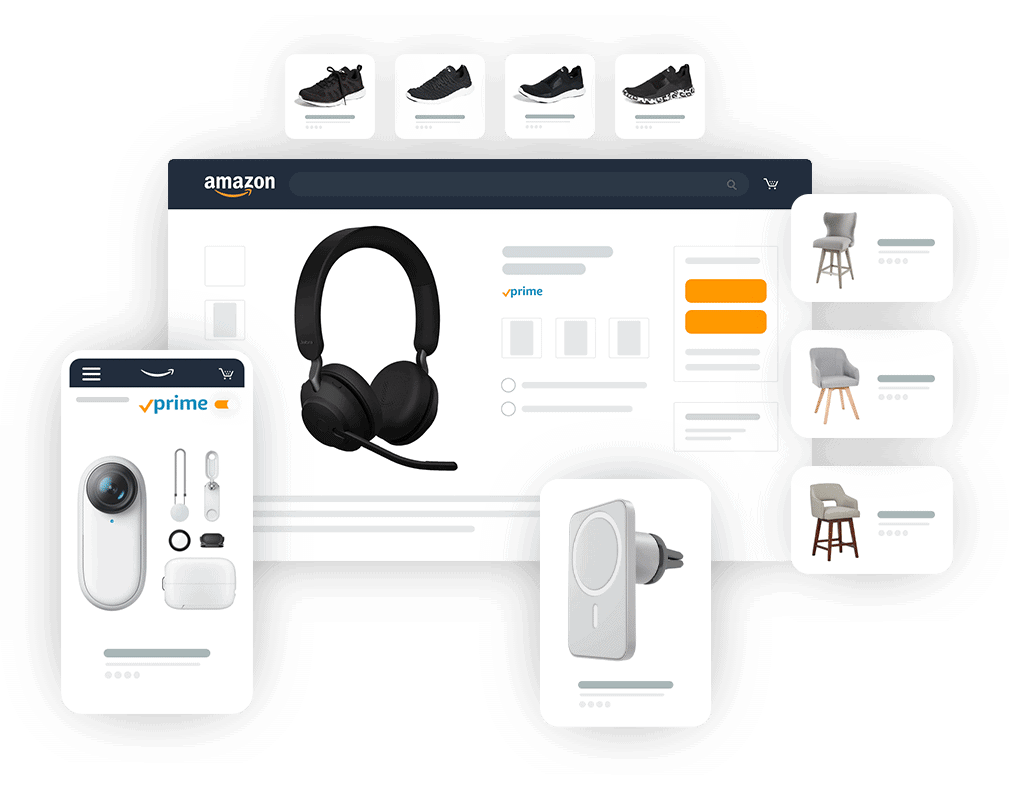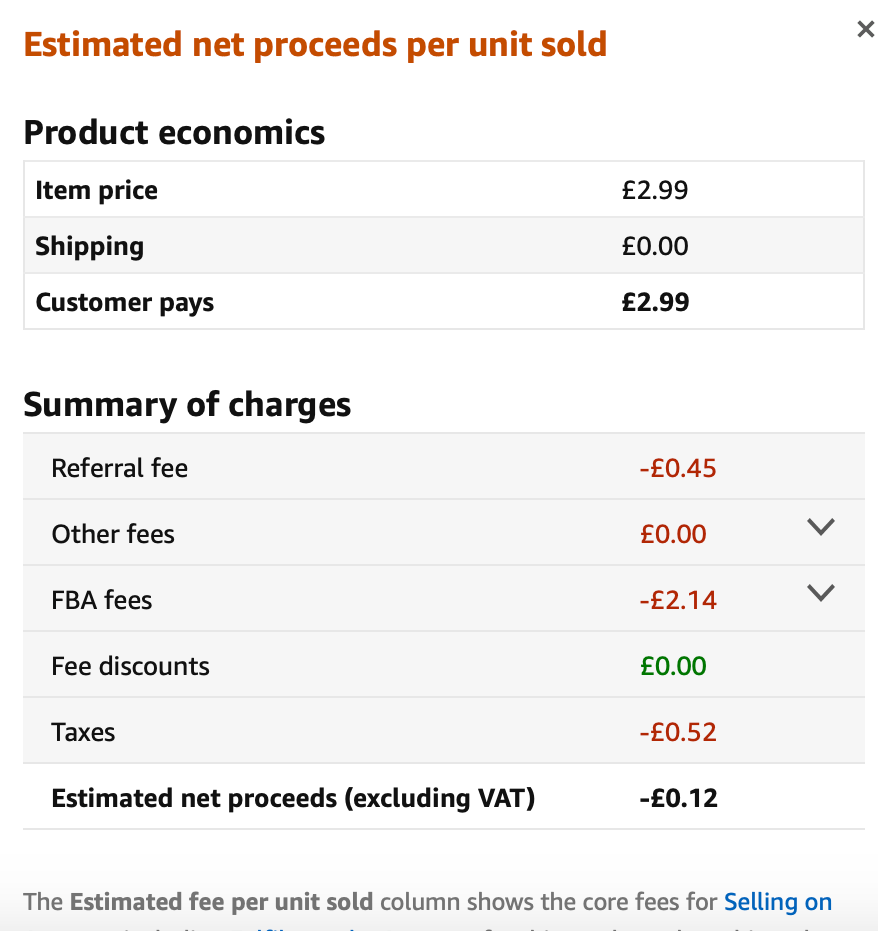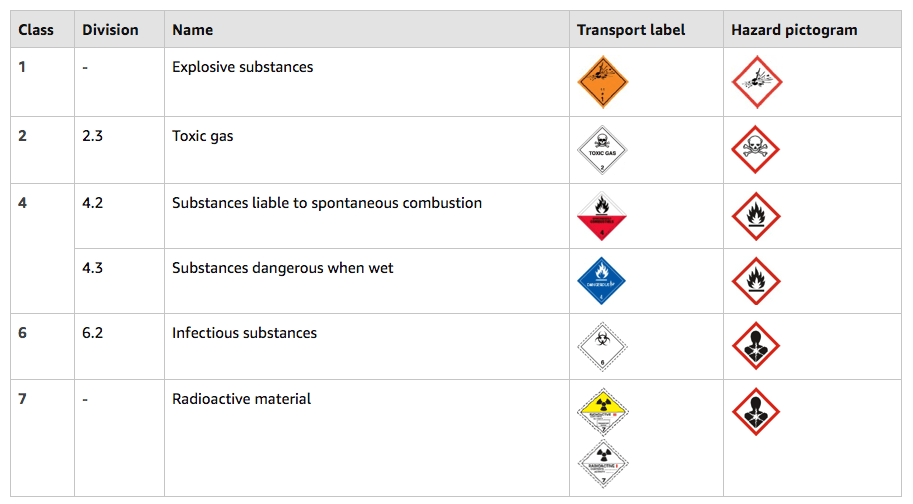Simplify Amazon Seller Central Management With These Proven Tips
Due to various customer and seller-friendly features, Amazon has maintained a solid grip on its number one spot in the eCommerce market. One of those valuable features aimed at third-party sellers is Seller Central.
Your job as a seller on the marketplace is eased tremendously with its use as it provides multiple seller-related controls in one tidy location. It makes the tedious multitasking of running an Amazon online store a breeze.
However, it is easier said than done. The availability of multiple Amazon Seller Account management controls in one spot can make it hard to operate, especially for newcomers. And its inefficient use means you can fall behind the competition, leading to lower sales.
If that is the case, then this blog is for you. Read on to learn about Seller Central's intricacies and how best to use them.
Table of Contents
What Is Amazon Seller Central?

Seller Central can be considered a virtual toolbox that sellers on Amazon's marketplace can use to perform the functions necessary to run their online store. The related information is presented to you in the form of a dashboard that you can customise. With it, you can do the following:
- Create Your Amazon Seller Account
- List Products and update their information
- Add prices and automate it across your portfolio
- Manage Inventory
- Create, run, and manage ad campaigns
- Contact Amazon's Seller Support
- Track the daily sales of listed products
- Handle payments, returns, and refunds
- Monitor store performance by tracking customer metrics
- Use growth tools that can help increase sales
- Shipping management using Fulfilled by Amazon (FBA)
- Use Amazon Global Selling to sell your products worldwide
- Customer feedback and review management
- Access customised business reports and download them
- Bookmarking of frequently and recently used templates
- Management of selling programs like Amazon Custom, B2B, Handmade, etc.
Thus, Seller Central is the all-in-one Amazon account management mechanism you can use to make selling on the platform more practical and profitable.
Setting Up And Accessing Your Amazon Seller Central Account
You must first set up your Seller Central Account to sell on Amazon. The process is pretty straightforward if you have the necessary personal information.
The following are needed for the account creation:
- Business Name
- Your Contact Information (separate ones for Amazon and your customers)
- Actual name and address
- Bank account information
- Your Business Logo
- Locations to which you're shipping/delivering your products
- Refund and return policy
- A unique About Us section where you describe your brand's story: it would help if you took care to make it informative and emotionally appealing to hook your customers to your brand and instil confidence about it in them.
Alongside these, you need to know what your Storefront will look like, including the overall theme, design, colour palette, highlighted products, promotional content, etc.
These aspects give your store a stand-out look and feel so that customers can easily differentiate between it and your competition's store. The elements that make up the user interface should also be considered as they determine the ease of use and customer interest in the store. You can hire Amazon Seller Central consultants for this task as they will have the necessary experience and expertise to create a bespoke storefront for your business.
In case you want to create your account by yourself, then you should follow these steps:
- Visit your region's Amazon site and select the sell option present there. You can also type in Services.Amazon.xxx [where xxx corresponds to the regional second domain name like .com, .us, .de, etc.]. Alternatively, you can go to the “Manage Your Seller Account” section in the mobile app's Accounts section and select the “Start Selling” option.
- You will get redirected to the account creation page, where you should enter your name, email ID, and password.
- With the present login credentials, enter into your Seller Central account. It will take you to the configuration page. This is where you should enter the personal details mentioned above.
- The entry process is straightforward. For the “Tax Information” section, add your tax identification information like business name, address, classification ( like LLC, Partnership, or Sole Proprietor), and your Individual Tax ID number/Social Security number.
- Also, remember to select the Selling Plan that fits your requirements. Amazon offers a choice between two: Individual and Professional. In the Individual plan, you won't be selling as a business but as an individual merchant. As an Amazon business owner, you should select the Professional option, which gives you access to advanced selling tools for a monthly subscription fee. This option is geared toward medium and large businesses.
- Once done, review the written content for accuracy, as these are important and could land you in trouble if false. Remember that you only need a single Seller Central account for a single region and that you should set up a separate account for every region you sell in.
- Secure your account by going with two-factor authentication security. Set a password that you can easily remember and ensure that your phone number/email ID is correct to receive the passcode.
With these steps done, you are ready to start accessing your Seller Central dashboard to list your products and perform other necessary tasks for your business.
Best Ways To Manage Your Amazon Seller Central Facility

The Seller Central dashboard greets you with an array of seller-related options you should use to the fullest extent possible to spearhead your business in the marketplace.
One way to accomplish this is to outsource the Amazon Seller Central management services to a professional agency. The experts there will set it up to run your business most efficiently and profitably based on their experience and knowledge of the platform.
From your end, you can also manage the seller central facility better by adopting some measures and avoiding common mistakes.
Create An All-Encompassing Setup Strategy
How do you want your storefront to be? What should be the effects on the visitor such that they easily retain, recall, and return to reconvert? What message should the entire setup reflect whenever someone looks at it? How will these tie to achieving your business objectives? These are the kind of questions that your strategy should answer.
As the Seller Central dashboard allows you to control all aspects of your business, you should have a robust plan to maximise this potential. Decide on the initial storefront design and content, like the brand story. Finalise the category and number of products you want to sell based on market and competitor research. The shipping and return policies must be determined, as well as the pricing structure of the products and their variants.
Select the metrics you want tracked to know about your store's performance. Customise your dashboard for the same so that you get the respective report. Aligning this strategy with the niche you are operating in will pay great dividends as the propensity for conversions will be higher.
Create Excellent Product Listings

Your choice of products to sell is one of the most significant factors determining your success. The other is how well you present them to the target audience on your product pages. Both of these can be controlled via your Seller Central facility. Regarding your choice of products, you should have them approved by Amazon by submitting the list. Once approved, you can proceed with writing informative and appealing product descriptions with titles for them.
Your product descriptions should be created with Search Engine Optimisation (SEO) in mind at every step. Conduct the necessary keyword research to get the most performing, relevant keywords for use in your titles and product descriptions. Titles should be brief and descriptive, informing the prospect about the product.
It would help if you placed the keywords with adequate spacing in the description such that the correct number of them are present. Follow the applicable rules, so you don't add any objectionable content to the mix. This is especially important when writing descriptions for different regions, as content permissible in one may be prohibited.
You should carefully choose images to display the product flatteringly for maximum attention. It must be shown from various angles and contain infographics that briefly mention the product's various features. Using A+ content, you can also include short video clips and animations of the product with these images to enhance their appeal.
Follow the guidelines that list images' dimensions, resolution, background, and other requirements. It helps to apply product photo enhancing techniques like HDR imaging to bring out the best in the photos by removing unwanted content and embellishing the product.
Monitor And Understand Various Business Metrics
An Amazon store needs many metrics to be measured to analyse and improve its performance. The data gathered on various KPIs via the dashboard is crucial to evaluating your current operational and marketing strategies or devising fresh ones.
This exercise is essential because eCommerce is a volatile industry where market dynamics are constantly changing, sometimes momentarily. Thus, your Amazon Seller Central Management must be on alert at all times, ready to respond to those changes asap. It's the only way to remain profitable and preserve brand reputation.
You should know how to read and analyse the various KPIs that matter to your business. They need to be compared to theoretical figures calculated while drawing up your business strategy to check if they are near the expected values to fulfil your business objectives.
Some of the important KPIs that every seller should know about are:
- Bounce rates – The number of people who visited your product pages and didn't convert compared to the total number of visitors. Lower is better.
- Conversion Rate – The number of people who bought a product vs those who visited that product's page. Higher is better.
- Number of Returns – The ratio of the number of products returned to the total number of products sold. Lower is better.
- Advertising Cost of Sale (ACoS) – The total investment put into the advertising of a category/type of products to the number of products of that category/type sold. Lower is better.
- Return on Ad Spend (RoAS) – the revenue gained by selling a category/type of product to the total amount of money spent on its ads. Higher is better.
- Time Spent on Page/Site – How much time a visitor spent on a product page/overall store site. Generally, higher is considered better as it indicates interest, but the exception is when a visitor converts quickly.
- Positive-to-Negative Feedback Ratio: The total number of positive feedback received to the number of negative ones. You may even take it as a ratio between the number of positive feedback received and the total overall feedback received. Higher is better.
- Click-Through-Rate (CTR) – The percentage of visitors that click on your listings or ads. Higher is better. Figured out indirectly using other metrics like ads, keywords, and content effectiveness by downloading the Search Term report.
You may consider other metrics that matter to your business specifically for added insight. Set a timetable for reviewing these periodically to remain in line with market dynamics and your business's situation.
Contact Seller Customer Support Easily

Online business management is messy, with issues routinely cropping up. These can be challenging and significantly impact your margins and brand reputation. But not if you utilise the Amazon Seller Support feature in your Seller Central account. It covers every possible kind of issue that you may face as a seller through various troubleshooting methods. You even get to choose the language you want.
There are phone numbers for every region that Amazon operates in. They connect you to an Amazon support representative by letting you schedule a callback at a convenient time. You can add a few lines about the issue you're facing in the box provided. You can select the “This issue is urgent and requires immediate attention” checkbox in emergencies.
The other option is email, where you can describe the issue you face in detailed text and add attachments like documents, images, etc. Here, it would help if you remembered to add the correct subject in the appropriate section so that your mail doesn't get lost in a pile and lets the reader know exactly what it is about.
The customer service team will respond to your query within 24 hrs or less. Note that you should revert to Amazon within the same deadline, or else the case will be closed by them.
For common problems, you needn't contact the customer service team. There are plenty of FAQs and answers to them readily available right when you enter the support section in the form of drop-down menus. If they don't satisfy your needs, click on the ‘Get Support' button. You can choose between the two broad categories, i.e., ‘Selling on Amazon' and ‘Advertising and Stores.' The first addresses issues about selling and listing, while the second is for sponsored brands, stores, and sponsored products.
Another way to solve your issues is to go to dedicated Seller forums that connect you to your peers. You will find content related to all sorts of issues sellers face and their solutions. You can browse through the various applicable sections or enter your issue in the search bar to check if anything related is present. If not, you can post your query there, and you are bound to get an answer from a fellow seller.
To make the issue resolution process more accessible, do these:
- Before contacting support, keep all relevant information like your seller account details, ASIN, billing information, previous response to the query, etc., ready.
- Have your disputed order open before contacting a representative, particularly customer-related ones.
- Besides the legal information, make notes about points you want to mention to the representative. Likewise, note down information they give during the call so that you can refer to them later, especially if you have to give a follow-up call.
- Mention your issue with utmost clarity in your emails. Stick to the general topic and provide your side of the issue without mistakes and missing information.
- Don't forget to mention the subject of your email clearly and succinctly too. It helps the representative to get an idea of the issue quickly.
- Check the progress of your issue resolution in the Case logs section under the Amazon Seller Central Help section.
Advertise For Maximum Exposure
Pay-per-Click ad campaigns are the most effective way to generate traffic to your pages and convert your prospects. With Amazon, you can execute these campaigns in many ways, like Amazon Sponsored Products, Amazon Sponsored Brands, and Sponsored Display. The Seller Central console lets you bid on the type and placement of the ad according to your convenience.
With the help of Amazon seller central consultants, you can fine-tune these optimisations for the best ACoS and RoAS outcomes to yield the highest ROI for your budget. You have the facility to automate many of the functions necessary for PPC, like the bidding process, keyword search, report generation, etc.
By carefully selecting the products, their corresponding images, keywords, short description, and timing of your ads, you can catapult incoming traffic and brand image. One great strategy is placing Sponsored Products on top of the search results for a particular keyword or product-based search, with a few related product ads in the middle.
Since the dashboard lets you monitor various metrics associated with campaign performance, you can routinely check it and determine the campaigns' quality and progress. You will know exactly which aspect you need to revise and how. This helps you prepare your target audience for future events like sales and new product versions.
What You Should Not Do
Miscalculate Amazon FBA Fees/Charges

Amazon charges modest fees for its Fulfilled by Amazon (FBA) warehousing and shipping management services. If you opt for it, recommended as it relieves you of those responsibilities, you have to pay a certain amount for the service.
If you miscalculate these charges while accounting for your income and expenses, you will face problems with your margins, possibly incurring losses you won't even recognise. Use the FBA calculator to ensure you're always on the right track regarding these fees and associated charges.
Manipulate Customer Feedback
Your customer feedback like reviews and ratings should not be manipulated by you, such as by buying them. Such behaviour will raise suspicion and, when detected, will lead to Amazon taking down your account. The right way to build up your positive ratings is to use facilities like Amazon Early Reviewer Program, PPC ads, better SEO strategy, quality descriptions, prompt and accurate responses to customer queries, etc.
Misinform Customers About FBA
Your product description should mention if the respective product comes under Amazon FBA or if you are handling the shipping and returns under the Fulfilled by Merchant (FBM) module. Adding false information about it or keeping it empty will cause issues for both the customer and you. Amazon penalises sellers for falsely using the FBA badge. This move will degrade your brand value and may cause account suspension too.
Using More Than One Account
The Seller Central is limited to a single user, and you should stick to that. If you get caught using more than one account to sell on Amazon, you risk losing all those accounts and getting permanently banned from the platform.
Listing Prohibited Items

Some items, like adult-only items, counterfeits, live animals, banned animal parts like ivory, etc., should not be sold on the platform. Refer to the guidelines applicable to the specific region to confirm if you can sell certain items there.
In Conclusion
Amazon Seller Central is the ideal toolkit for sellers of all kinds, letting you pull every string that controls your store's every aspect. Depending on your business, you may not need every feature, but you should make the most out of each one you use. Only then will you be able to reach your store's full potential. If you doubt how to utilise it to the maximum, you should outsource Amazon Seller Central Management Services to a professional agency for a cost-effective, high-profit selling experience.
A seller on Amazon's marketplace will have their hands full always as they must work on multiple associated responsibilities. To ease this multitasking, Amazon has introduced the Seller Central facility for all sellers.
You can control every aspect of your store from its dashboard/console, from your seller account to customer service. The downside is that using all of its features can be confusing and overwhelming, which is solved by implementing some proven Amazon Seller Account Management practices.
Several such dos and don'ts are mentioned in this blog for your convenience and understanding, along with some of the business-related metrics you must track to optimise your listing and operations. A dedicated external agency for this will lower your overall cost while increasing revenues.
Author Bio: Mike Wilson is a content strategist at SunTec India with a specialisation in eCommerce product data entry and Amazon listing services. He has 5+ years of experience as a B2B content creator and has written numerous informative pieces to help sellers make sense of the continuously evolving eCommerce landscape.
